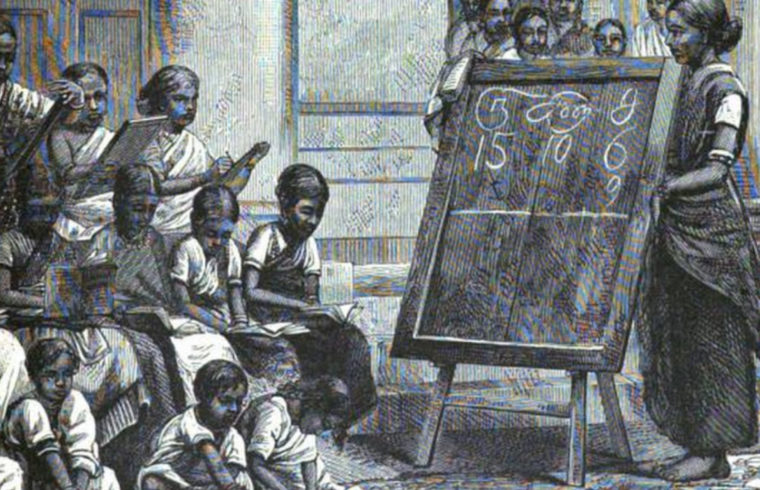Vihara Savindi Perera
PoliTeknik International Board Member –Pupil from Matara, Sri Lanka
Monastic education dates back to the 6th century BC in Sri Lanka, according to the Mahavansa and Dipavansa which contain some of the oldest historical records of the island. Monasteries & temples were the fi rst educational centers for both the Buddhist clergy & the lay people in Sri Lanka villages. Before colonial times, education was limited only to a exclusive group of individuals, which primarily included Buddhist monks. These monks would in turn, instruct individuals from the upper echelons of the village in reading & writing. In Tamil communities, teaching was the role of the educated Brahmins & Velars.
The curriculum of these traditional Schools mostly involved religious studies, & practical or technical skills, which included mental working, weaving, architecture & geometry. Art & painting were also among the Subjects that were taught. Outside of these schools, knowledge was inherited from father to son. Yet, the vast majority remained unlearned & illiterate.
The ancient system of learning was followed by a more modern education system, which was introduced to Sri Lanka by its Europeans colonizers. In 16th century, when Sri Lanka fell Portuguese control, Portuguese missionary groups set up a number of schools in Sri Lanka to promote Roman Catholicism. In the following century, when the Dutch captured the island, they introduced a Christion primary school system, which fl ourished for about a hundred years. The British took over the country in the late 18th century and they proceeded to change the medium of instruction in Christian missionary school to English Language. This greatly reduced student attendance. As most of the Sri Lankans did not know English at the time. In 1836, a standard system of government schools was established by the British based on the recommendations of the Colebrooke commission, giving rise to the government funded school system in the Island, which persists to this day. Royal College, Colombo, which began as a privet school in 1835, was made the first governmentrun secondary school for boys in 1836. Most government schools taught student in vernacular, resulting, in a resurgence in student attendance. Education mostly free, was made offi cially so in 1848, several new educational institutions were founded the literacy rate increased.










